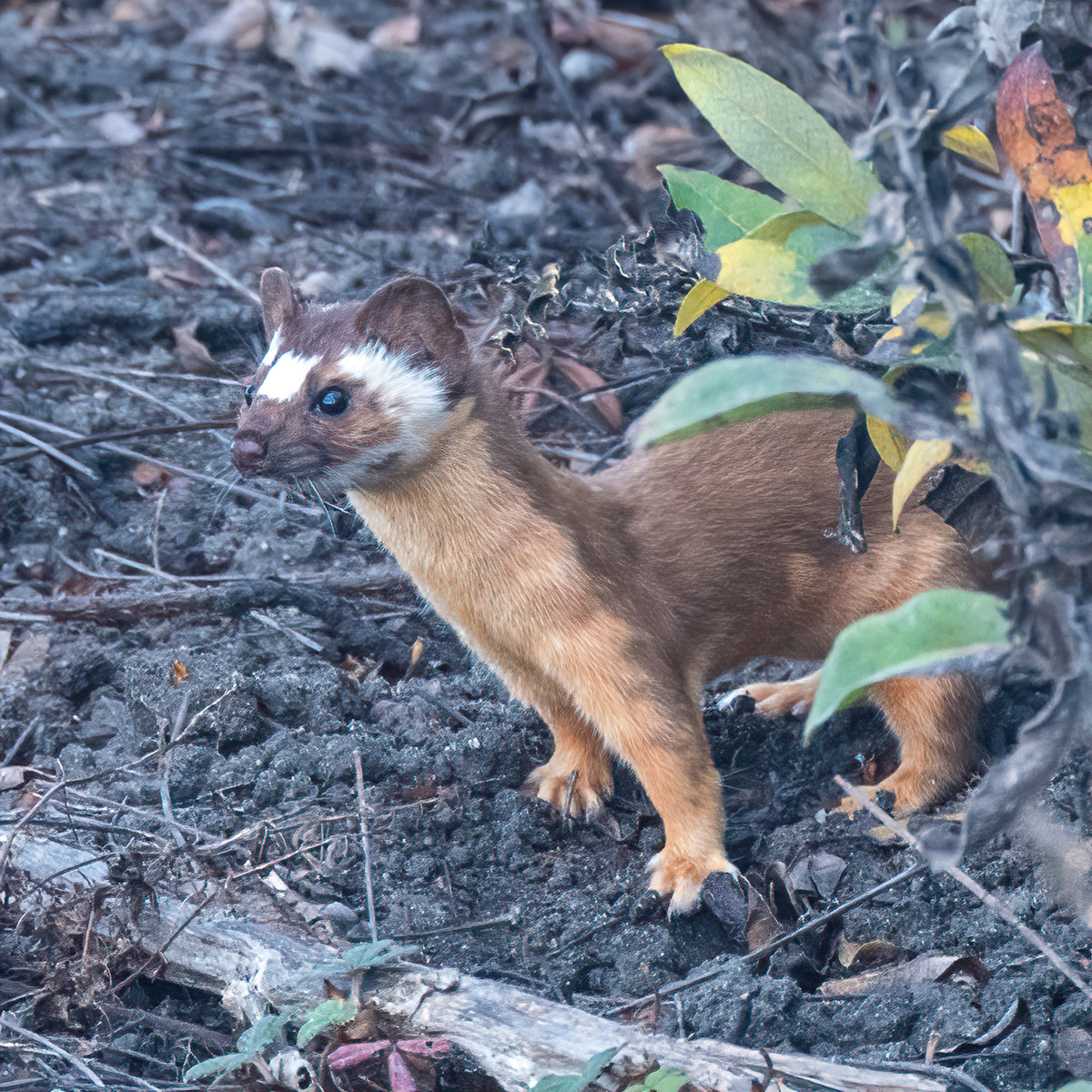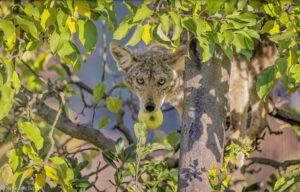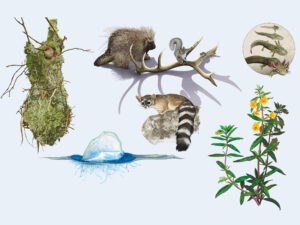While poking around a Half Moon Bay sand dune trail recently in search of the perfect landscape photograph, I heard a rustling in the bushes. Something dropped a rodent a few feet in front of me and scampered away, and I raised my camera and waited quietly to see whose lunch I had interrupted.
To my surprise, the creature that appeared in my camera’s viewfinder to retrieve its snack was a long-tailed weasel (Mustela frenata). Elusive, fierce carnivores, they’re only about 12 inches long (with an additional 3-6 inches of tail) but will attack prey larger than themselves, and require more than a quarter of their body weight in food every day.
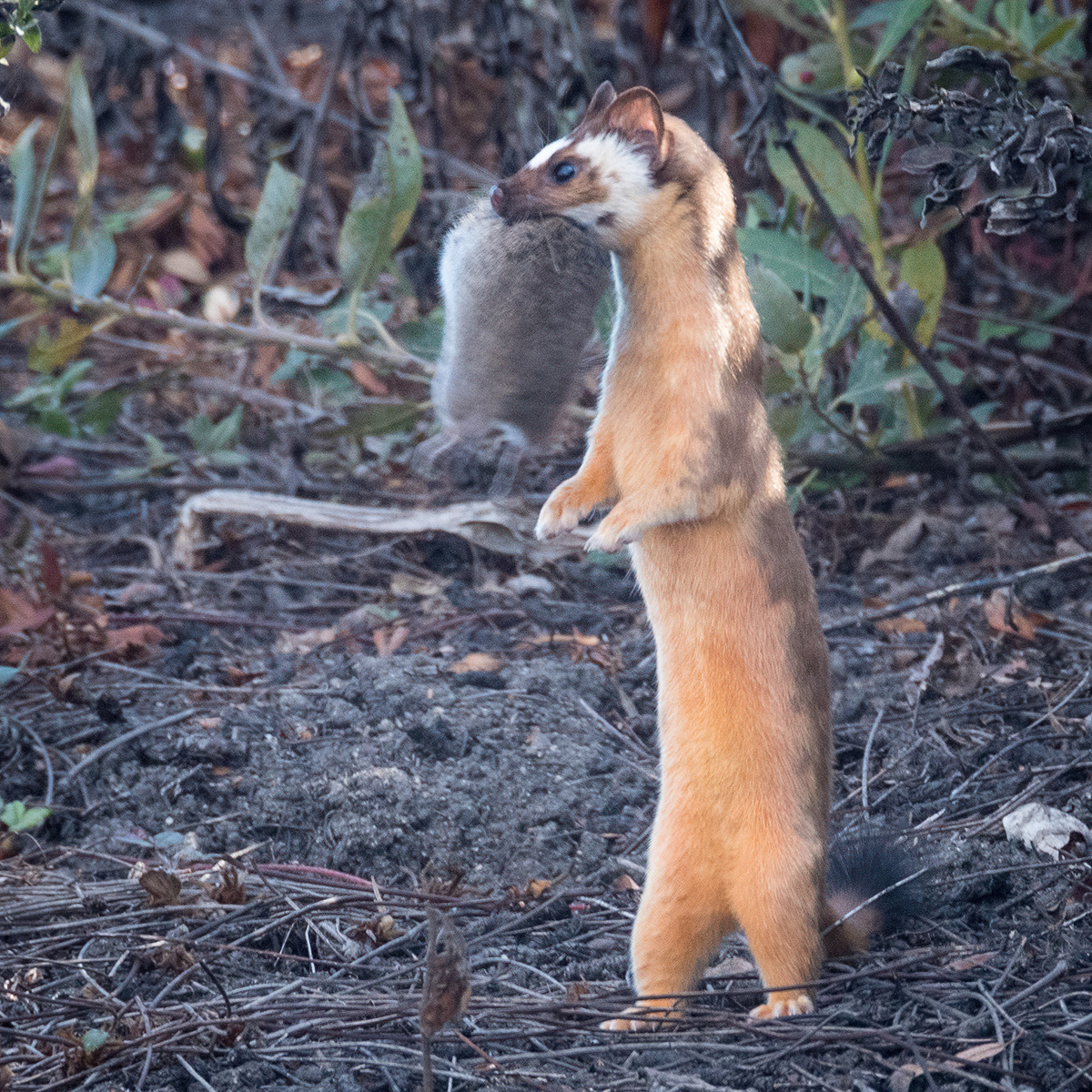
Long-tailed weasels are not seen often, though according to the International Union for Conservation of Nature they’re not rare or threatened and their range extends through most of California. I’ve read accounts of photographers waiting years to see one. I wanted to know why encounters were relatively rare, so I emailed Zoë Rossman, an urban carnivore ecologist at the University of New Mexico and wildlife photographer. (I first found out about long-tailed weasels from her Instagram images of an encounter with a curious long-tailed weasel.)
“They’re small, fast, and tend to prefer habitat with lots of cover, so my best guess would be that they’re just less conspicuous than more commonly seen mammals,” Rossman wrote back. “In addition, they don’t do as well as some other carnivores (like raccoons or coyotes) in urban and fragmented landscapes, so if you’re hiking in highly modified areas (in or around cities) you’re probably less likely to see them.”

Thanks to environmental restoration at Half Moon Bay State Beach and other local areas, there is plenty of habitat for long-tailed weasels and other native animals. State Park staff and volunteers have been actively removing non-native plants and restoring habitat for over 25 years, using native plants grown from seed. The sand dunes along portions of the California Coastal Trail have been restored to a mostly native state, which visitors can see in places like the Nature Trail at Francis Beach. I grew up in California, but before visiting Half Moon Bay my experiences with sand dunes had been mostly ice plant monoculture.
In addition to being a fine habitat for small mammals, the California Coastal Trail is a delight for human senses. The colors and textures of native plants that line the dunes and the Coastal Trail have year-round visual interest, and the air smells of sea salt and sagebrush. Raptors perch on trees and posts, and small birds, mice, and brush rabbits rustle around in the shrubbery.
The paved portion of the Coastal Trail stretches approximately 3.5 miles from Mirada Road at the north, to Poplar Street at the south, with a further unpaved section continuing down into the Wavecrest Open Space. The intrepid wanderer is rewarded with unpaved side paths, detours, cul-de-sac trails out onto the bluffs, and paths down to various beaches. There are restrooms and parking at several points along the trail. The wide, mostly flat paths are shared politely by bicyclists, joggers, walkers, roller skaters, and easily distracted nature photographers.
Due to the closure of the pedestrian bridge at Mirada Road at the northern end of the trail, there’s not uninterrupted Coastal Trail access to Pillar Point Harbor without a detour that takes you to the shoulder of Highway 1, then up past Surfer’s Beach. It’s worth a visit, however, no matter if you get there on wheels or on foot.
Within Pillar Point Harbor, one can find well over a dozen species of birds, harbor seals, and shouty sea lions. I’ve heard of sea otters being seen in the harbor, though it’s a rare sight. (Otters are also mustelids, the same family as weasels.) The harbor is home base to the Mavericks surfing competition, as well as a working fishing fleet (and a fabulous place to purchase dungeness crab when in season). The Pillar Point Marsh trail is great on foggy mornings, with the radar orb from the Pillar Point Air Station adding an extra otherworldliness to the experience as it looms out of the fog.
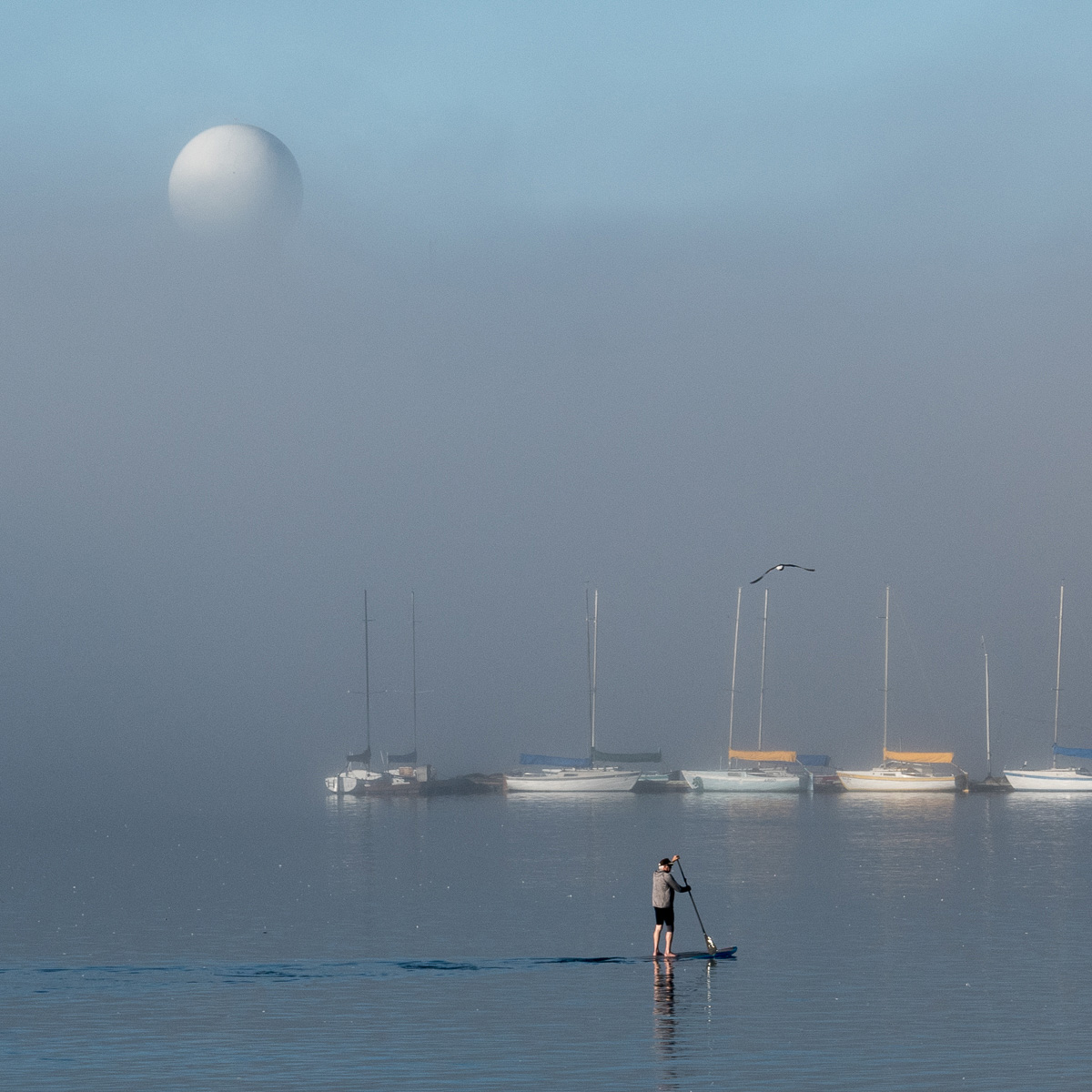
Reports on iNaturalist say that long-tailed weasels have also been sighted along the flat, unpaved Pillar Point trail on the north-west side of the harbor. On a recent visit I walked the trail out to the breakwater but, of course, did not see any weasels. I’m delighted that my weasel experience was completely unplanned, and that I had my camera, but now I’m determined to try and see another one on purpose.
I asked Rossman for her weasel-spotting advice. “Your guess is as good as mine—as a mammalogist who spends plenty of time outside searching for critters, I’ve only seen one long-tailed weasel in the wild” she wrote. “My best advice would be to go exploring as much as possible—even if you don’t glimpse a weasel, you’re sure to find something wonderful when you go out in nature with an open heart and mind.”
